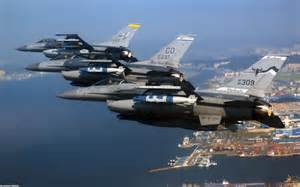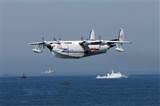Aircraft
Welcome to the extensive information about the Aircrafts.
An aircraft is a machine that is able to fly by gaining support from the air, or, in general, the atmosphere of a planet. It counters the force of gravity by using either static lift or by using the dynamic lift of an air foil,[1] or in a few cases the downward thrust from jet engines
The human activity that surrounds aircraft is called aviation. Crewed aircraft are flown by an on board pilot, but unmanned aerial vehicles may be remotely controlled or self-controlled by on board computers. Aircraft may be classified by different criteria, such as lift type, propulsion, usage and others.
Contents
Flying model craft and stories of manned flight go back many centuries, however the first manned ascent – and safe descent – in modern times took place by hot-air balloon in the 18th century. Each of the two World Wars led to great technical advances. Consequently the history of aircraft can be divided into five eras:
- Pioneers of flight, from the earliest experiments to 1914.
- First World War, 1914 to 1918.
- Aviation between the World Wars, 1918 to 1939.
- Second World War, 1939 to 1945.
- Postwar era, also called the jet age, 1945 to the present day.
- 2 Methods of lift
- 3 Propulsion
- 4 Design and construction
- 5 Flight characteristics
- 6 Impacts of aircraft use
- 7 Uses for aircraft
Main article: fixed-wing aircraft
The forerunner of the fixed-wing aircraft is the kite. Whereas a fixed-wing aircraft relies on its forward speed to create airflow over the wings, a kite is tethered to the ground and relies on the wind blowing over its wings to provide lift. Kites were the first kind of aircraft to fly, and were invented in China around 500 BC. Much aerodynamic research was done with kites before test aircraft, wind tunnels, and computer modelling programs became available.
The first heavier-than-air craft capable of controlled free-flight were gliders. A glider designed by Clayey carried out the first true manned, controlled flight in 1853.
Practical, powered, fixed-wing aircraft (the aeroplane or airplane) were invented by Wilbur and Orville Wright. Besides the method of propulsion, fixed-wing aircraft are in general characterized by their wing configuration. The most important wing characteristics are:
- Number of wings – Monoplane, biplane, etc.
- Wing support – Braced or cantilever, rigid, or flexible.
- Wing plan form – including aspect ratio, angle of sweep, and any variations along the span (including the important class of delta wings).
- Location of the horizontal stabilizer, if any.
- Dihedral angle – positive, zero, or negative (cathedral).
thank you…




